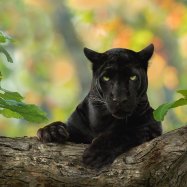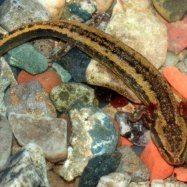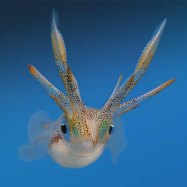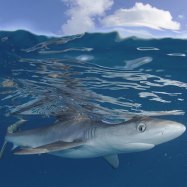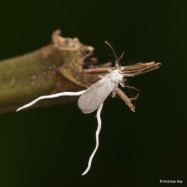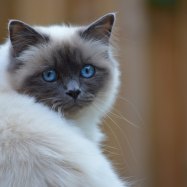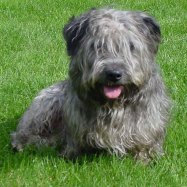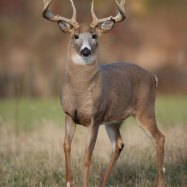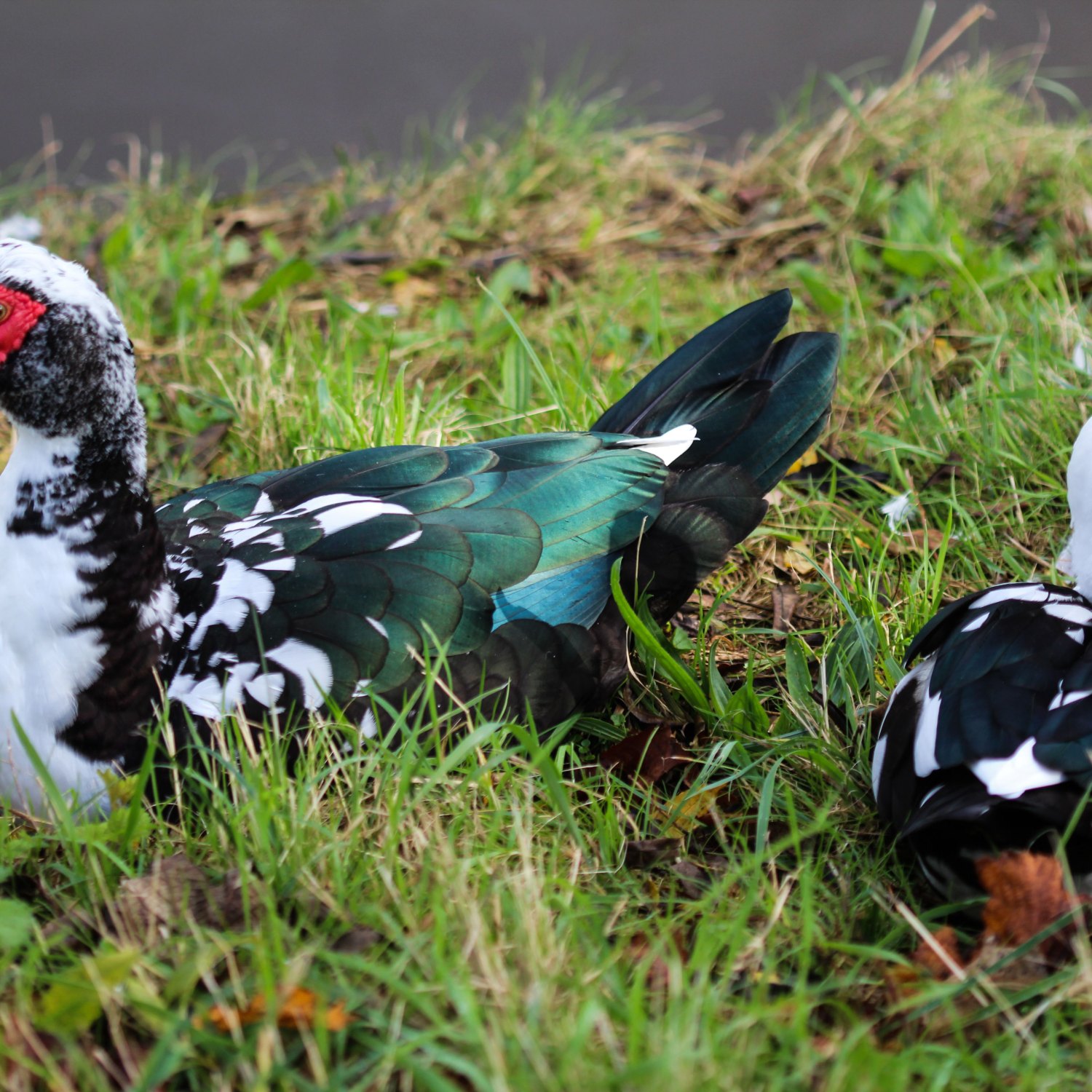
Muscovy Duck
64-84 cm (25-33 inches)
The Muscovy Duck is a medium-sized bird known for its long and broad body. They can reach a length of 64-84 cm and are found in various countries and regions, making them a common sight around the world. They belong to the Anatidae family. These ducks have a unique appearance with their distinctive red face and white and black feathers. Next time you spot a Muscovy Duck, remember they can be found in North and South America, Europe, Asia, and Africa.
Animal Details Summary:
Common Name: Muscovy Duck
Kingdom: Animalia
Habitat: Freshwater habitats, including wetlands, lakes, ponds, and rivers
The Fascinating World of Muscovy Ducks
It's not every day that you come across a duck with such a unique appearance and fascinating nature. The Muscovy duck, scientifically known as Cairina moschata, is a species that has captured the curiosity and admiration of many bird enthusiasts around the world. This seemingly ordinary-looking bird is, in fact, anything but ordinary. With its remarkable body shape, coloration, and behavior, the Muscovy duck has earned its place as one of the most interesting and widely-distributed bird species in the world Muscovy Duck.A Kingdom of Diversity: Muscovy Duck's Classification
Like all living organisms, the Muscovy duck has been classified into a specific group based on its characteristics. The first step in understanding this bird's classification is knowing its scientific name. "Cairina moschata" is derived from the Greek words for "goose" and "musky," respectively. This name perfectly encapsulates the origin and distinct smell of this bird. But beyond its scientific name, the Muscovy duck is further categorized into various classification levels as follows:Phylum: Chordata
The Muscovy duck belongs to the phylum Chordata, which includes all animals with a spinal cord. This group also includes mammals, fish, and reptiles. The Muscovy duck's phylum designation is essential as it tells us that this bird is a vertebrate with a backbone, and it shares some characteristics with other animals in this group.
Class: Aves
Another significant level in the Muscovy duck's classification is its class, Aves, which stands for "birds." All birds, including ducks, are classified into this group, which contains over 10,000 species Mountain Gorilla. The Aves class is characterized by warm-blooded animals, feathers, and a strong beak.
Order: Anseriformes
The Muscovy duck is a part of the order Anseriformes, which includes all birds with webbed feet and bills. Ducks, geese, and swans all fall under this group. The Anseriformes are further subdivided into two suborders, including the Anhimae and the Anseres. The Muscovy duck belongs to the Anseres suborder, along with other ducks and geese.
Family: Anatidae
The Muscovy duck's family is Anatidae, which includes all waterfowl species such as swans, geese, and ducks. This family is further divided into three groups: the shelduck subfamily, goose subfamily, and the duck subfamily. The Muscovy duck belongs to the latter, along with other duck species like Mallards and Wood Ducks.
The Muscovy Duck's Habitat and Distribution
One of the most interesting facts about Muscovy ducks is their widespread distribution. Originally from Central and South America, these birds can now be found in different parts of the world, including North and South America, Europe, Asia, and Africa. They have also been introduced to other areas, such as the Pacific Islands and the Hawaiian Islands.In terms of habitat, the Muscovy duck is highly adaptable and can thrive in various environments. However, it prefers to be near freshwater habitats, including wetlands, lakes, ponds, and rivers. You may also find them in urban areas, such as parks and gardens, as long as there is a source of water nearby.
The Muscovy Duck's Diet: A Balanced Omnivore
Feeding is an essential aspect of an animal's life, and the Muscovy duck is no exception. These birds are omnivorous, meaning they consume both plant and animal matter. Their diet primarily consists of aquatic plants, insects, mollusks, and small fish. They also feed on grains, fruits, and seeds, making them opportunistic feeders.As for their feeding behavior, Muscovy ducks typically forage around the shorelines, dipping their heads in the water to find food. They can also dive underwater using their webbed feet to catch small fish and crustaceans.
A Look at the Muscovy Duck's Physical Characteristics
The Muscovy duck's appearance may vary depending on the subspecies, but there are a few common characteristics that result in a visually unique bird.Coloration
When it comes to coloration, Muscovy ducks are striking creatures. While the males tend to be larger and more colorful than females, both sexes have similar color patterns. They are usually black or dark brown with a prominent white patch on their wings. Some subspecies may have a combination of white, black, and brown feathers, giving them a mottled appearance. However, their heads are always dark, and their eyes are red or black.
Body Shape
The Muscovy duck's body shape is another noteworthy feature. They have a medium-sized body, with males being slightly larger than females. Their long, broad bodies give them a distinctive look, making them stand out in a group of ducks.
Size and Weight
Muscovy ducks vary in size depending on their subspecies, but on average, they measure between 64-84 cm (25-33 inches) in length. They weigh between 2-5 kg (4.4-11 lb), with males once again being slightly heavier than females.
The Unique Behaviors of the Muscovy Duck
The Muscovy duck is not only remarkable in terms of physical characteristics but also in its behavior. Here are a few notable behaviors that make this bird stand out.Avoidance of Water
One of the most unusual behaviors of Muscovy ducks is their dislike of swimming. Despite being waterfowl, they prefer to stay on land and only go into the water to find food or escape predators. This behavior is due to the fact that their feathers are not as waterproof as other duck species, making it difficult for them to float.
Perching in Trees
Another behavior that sets the Muscovy duck apart from other ducks is their ability to perch in trees. These birds have long, sharp claws on their feet that allow them to climb trees and perch on branches. This behavior also serves as a defense mechanism, helping them evade predators on the ground.
Noiseless Communication
Unlike their quacking counterparts, Muscovy ducks are not known for their loud vocalizations. Instead, they communicate through silent gestures, such as flapping their wings, shaking their heads, or raising their feathers. They also use body language to communicate with each other and establish dominance within their flock.
Juggling Skills
While most ducks are known for their graceful swimming, Muscovy ducks have an impressive trick up their sleeves - or wings, rather. They are skilled at juggling objects with their bills, and it's not unusual to see them playing with rocks, sticks, or even trash. This behavior is believed to serve a purpose in their foraging and preening routines.
The Global Impact of Muscovy Ducks
As mentioned earlier, Muscovy ducks can now be found in various countries and regions, including North and South America, Europe, Asia, and Africa. While they have certainly captured the attention of many bird enthusiasts, their widespread distribution has also raised concerns about their impact on local ecosystems.In certain areas, Muscovy ducks have been labeled as invasive species, as they are known to compete with native waterfowl for resources and can potentially transmit diseases to other bird species. In countries like the United States, regulations have been put in place to control and prevent the spread of Muscovy ducks to new areas.
In Conclusion
In summary, the Muscovy duck is a fascinating bird with unique characteristics and behaviors. As the only domesticated duck species, they have a close relationship with humans, and their adaptability has allowed them to thrive in various environments worldwide. While their impact on local ecosystems may be a cause for concern, there's no denying the impressive and captivating nature of this bird. Next time you spot a Muscovy duck waddling around a park or perched on a tree branch, take a moment to appreciate the fascinating world of these remarkable birds.

Muscovy Duck
Animal Details Muscovy Duck - Scientific Name: Cairina moschata
- Category: Animals M
- Scientific Name: Cairina moschata
- Common Name: Muscovy Duck
- Kingdom: Animalia
- Phylum: Chordata
- Class: Aves
- Order: Anseriformes
- Family: Anatidae
- Habitat: Freshwater habitats, including wetlands, lakes, ponds, and rivers
- Feeding Method: Omnivorous
- Geographical Distribution: Originally from Central and South America, but now found worldwide
- Country of Origin: Central and South America
- Location: Found in various countries and regions, including North and South America, Europe, Asia, and Africa
- Animal Coloration: Varies depending on subspecies, but commonly black or dark brown with white patches
- Body Shape: Medium-sized with a long and broad body
- Length: 64-84 cm (25-33 inches)
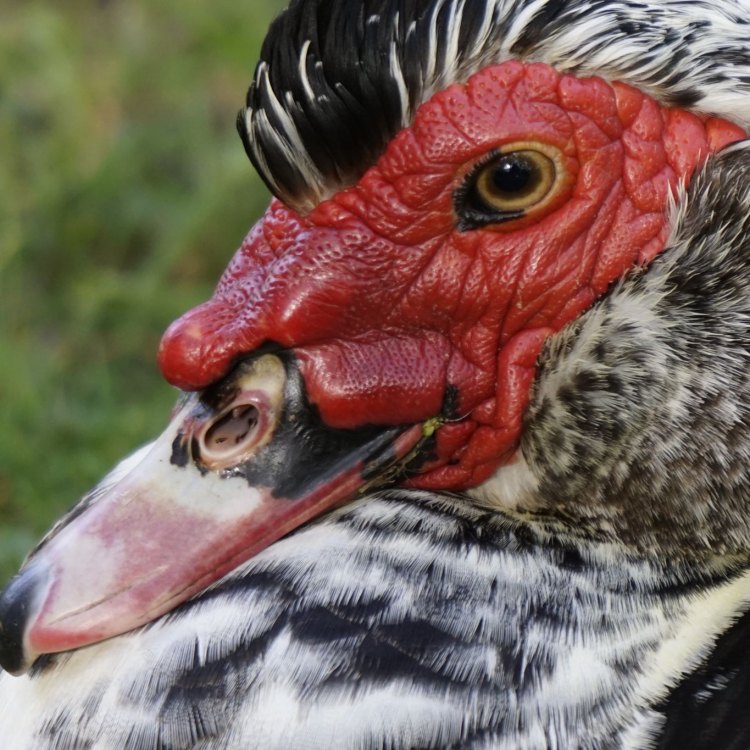
Muscovy Duck
- Adult Size: Medium-sized
- Average Lifespan: Up to 10 years in the wild, but can live longer in captivity
- Reproduction: Sexual
- Reproductive Behavior: Monogamous
- Sound or Call: Males make hissing and low-pitched cooing sounds, while females have a soft quacking call
- Migration Pattern: Non-migratory, but may disperse to find suitable habitats
- Social Groups: Often found in small groups or pairs
- Behavior: Muscovy Ducks are known for their perching behavior and ability to roost in trees
- Threats: Habitat loss, hunting, predation, and competition with introduced species
- Conservation Status: Not globally threatened
- Impact on Ecosystem: Muscovy Ducks can have negative impacts on native waterfowl through competition and hybridization
- Human Use: Domesticated for meat, eggs, and pest control purposes
- Distinctive Features: Large size, bald red face, caruncles (fleshy growths) on face and around eyes, and males have a pronounced red wattle on the bill
- Interesting Facts: Muscovy Ducks are the only domesticated duck breed that is not derived from the Mallard duck, and their meat is known for being lean and flavorful
- Predator: Predators include larger birds of prey, mammals such as raccoons and coyotes, and snakes.
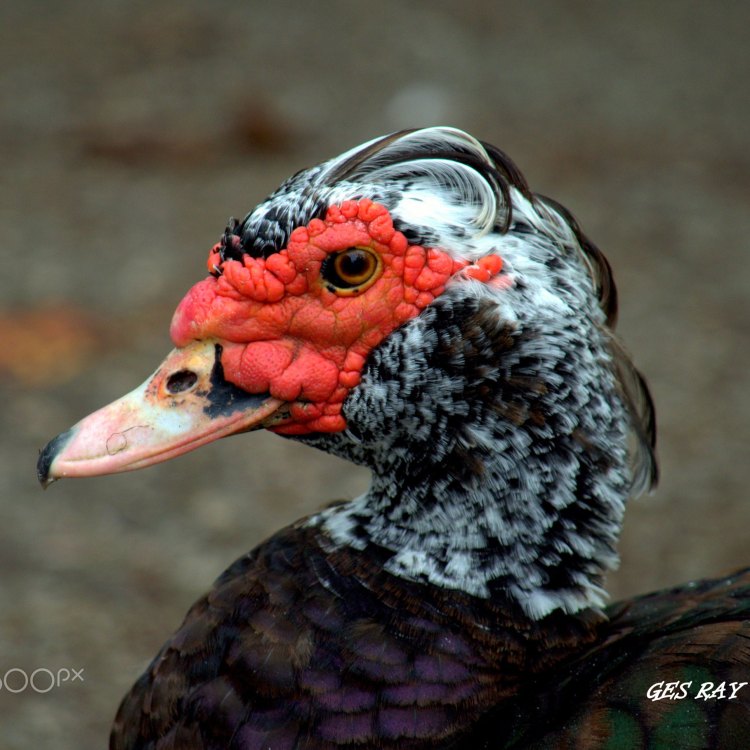
Cairina moschata
The Fascinating World of Muscovy Ducks: A Unique Species with Surprising Traits
In the world of waterfowl, there is a species that stands out from the rest - the Muscovy Duck (Cairina moschata). With their large size, distinctive features, and interesting behaviors, these ducks are a sight to behold. Whether found in the wild or domesticated, these birds have captured the interest of many with their unique characteristics. In this article, we will dive into the intriguing world of Muscovy Ducks, exploring their physical traits, behavior, threats, and impact on the ecosystem PeaceOfAnimals.Com.Adult Size: Medium-sized
At first glance, Muscovy Ducks may seem like an average sized duck, but it's their individual features that make them stand out. On average, adult Muscovy Ducks measure between 25 to 33 inches (64 to 84 cm) in length with a wingspan of 55 inches (140 cm). They can weigh anywhere from 4.4 to 15.4 pounds (2 to 7 kg), making them one of the heaviest breeds of ducks.
Average Lifespan: Up to 10 years in the wild, but can live longer in captivity
In the wild, Muscovy Ducks have an average lifespan of 5 to 10 years. However, under human care, they can live up to 15 years or more. The oldest recorded Muscovy Duck lived to be 20 years old, making them one of the longest-living breeds of ducks.
Reproduction: Sexual
Muscovy Ducks are a sexually reproductive species, meaning they require a male and female to breed Marine Toad. Breeding season typically occurs between October and March, but can vary depending on the geographical location. These ducks are very territorial during this time, with males fiercely defending their nesting sites and females.
Reproductive Behavior: Monogamous
While many bird species are known for their promiscuity, Muscovy Ducks are monogamous. They form long-term pair bonds with their mates, which can last for multiple breeding seasons. If one mate dies, the surviving bird will typically find a new partner.
Sound or Call: Hissing and low-pitched cooing sounds for males, soft quacking call for females
Unlike other duck species, Muscovy Ducks have distinctive vocalizations. Males communicate with a series of hissing and low-pitched cooing sounds, and when agitated, they produce a loud "eeee" noise. Females have a softer quacking call, which they use to communicate with their ducklings.
Migration Pattern: Non-migratory, but may disperse to find suitable habitats
Muscovy Ducks are non-migratory birds, meaning they do not embark on seasonal journeys like many other species of ducks. However, they may disperse in search of suitable habitats, especially during harsh weather conditions or when their nesting sites become overcrowded.
Social Groups: Often found in small groups or pairs
Muscovy Ducks are social animals and are often found in small groups or pairs. During non-breeding seasons, they form larger flocks, but they often roost and nest in small groups. Males are generally dominant within these groups and will defend their territory vigorously.
Behavior: Perching and roosting ability make them unique among ducks
One of the most interesting behaviors of Muscovy Ducks is their ability to perch and roost in trees. Unlike other ducks, which are primarily aquatic, Muscovy Ducks are semi-aquatic and can easily climb trees with their sharp claws. They use this skill to escape predators, rest, and even mate.
Threats: Habitat loss, hunting, predation, and competition with introduced species
Like many other bird species, Muscovy Ducks face several threats in their natural habitat. One of the most significant threats is habitat loss, as wetlands and water bodies are destroyed for development or agriculture. They are also hunted for food and feathers, and are vulnerable to predation by larger birds of prey, mammals such as raccoons and coyotes, and snakes. The introduction of non-native species also poses a threat, as Muscovy Ducks can compete with them for resources and even hybridize with them.
Conservation Status: Not globally threatened
Fortunately, Muscovy Ducks are not currently considered a globally threatened species. However, they are listed as "of least concern" by the International Union for Conservation of Nature (IUCN). But, there are some localized declines in populations due to the threats mentioned above.
Impact on Ecosystem: Can have negative impacts on native waterfowl through competition and hybridization
While Muscovy Ducks are not globally threatened, they can have an adverse impact on the ecosystems they inhabit. As mentioned earlier, they can compete with native waterfowl for resources and also hybridize with them, potentially disrupting the genetic diversity of the species.
Human Use: Domesticated for meat, eggs, and pest control purposes
Muscovy Ducks have been domesticated for centuries, and they have many uses for humans. Their large size, lean and flavorful meat, and ability to forage on insects, make them a popular choice for meat production. They also lay large eggs, which are a delicacy in some parts of the world. Additionally, their ability to control pest populations, such as mosquitoes, makes them a valuable addition to farms and gardens.
Distinctive Features: Large size, bald red face, caruncles (fleshy growths) on face and around eyes, and males have a pronounced red wattle on the bill
One cannot talk about Muscovy Ducks without mentioning their distinctive physical features. These ducks have a striking appearance, with a large body and wingspan. What makes them truly stand out is their bald, red face, along with the caruncles (fleshy growths) around their eyes and on their face. Males also have a pronounced red wattle (fleshy growth) on their bill, making them easily distinguishable from females.
Interesting Facts: Muscovy Ducks are the only domesticated duck breed that is not derived from the Mallard duck, and their meat is known for being lean and flavorful
Despite being domesticated, Muscovy Ducks are unique in that they are the only domesticated duck breed not derived from the Mallard duck. Their meat is also known for being lean and flavorful, making them a popular choice among chefs and food enthusiasts.
In conclusion, Muscovy Ducks are a fascinating species with many exceptional features. Their large size, distinctive appearance, and unique behaviors set them apart from other ducks. While they may face some threats and have a negative impact on native waterfowl, they still hold a special place in the hearts of many and are a valuable part of our ecosystem.
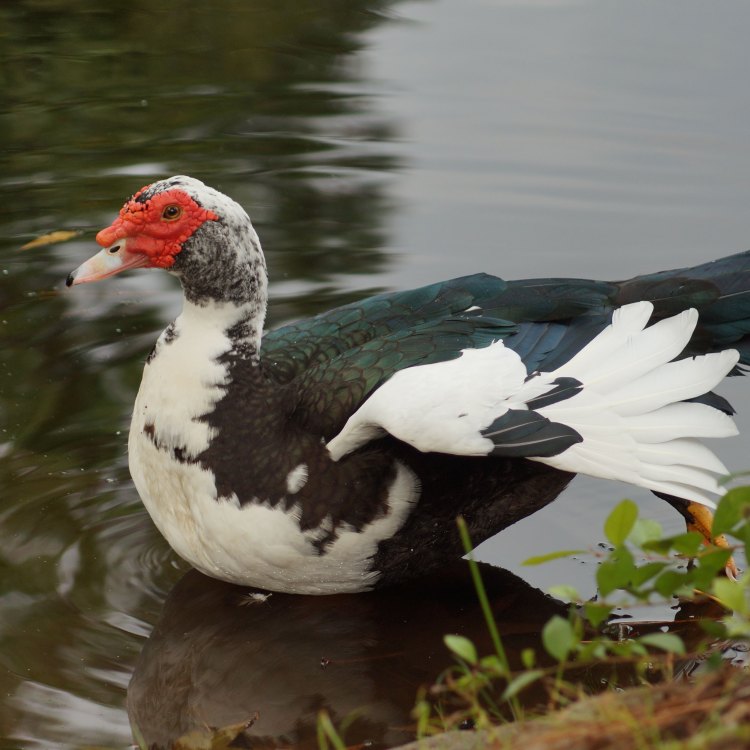
The Fascinating World of Muscovy Ducks
Disclaimer: The content provided is for informational purposes only. We cannot guarantee the accuracy of the information on this page 100%. All information provided here may change without prior notice.

